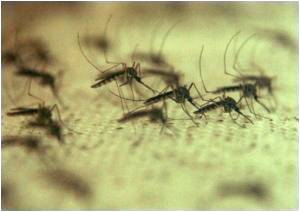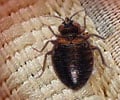How long do the Insects repellents last on the surface of the mosquito netting? Answers a new study.

‘How much of the insecticide is still found on the surface of these nets is going to help check the durability and effectiveness of the nets.’





"Until now, there was no established technique for measuring the distribution and concentration of insecticides on the surface of the netting," says Chuanzhen Zhou, a research scholar at NC State's Analytical Instrumentation Facility (AIF) and co-author of a paper on the work. "And that's important because only the insecticide on the surface is bioavailable and able to kill mosquitoes." "We were looking for a way to address this problem - and we've now developed a way to measure two of the most common insecticides used on any type of netting," says coauthor Fred Stevie, senior researcher in the AIF. "And, presumably, we'll be able to extend the technique for other insecticides as well.
"This has worldwide impact," Stevie says. "There are more than a billion nets out there, and our new technique can tell us how long the pesticide on those nets lasts and how often they need to be replaced. Ultimately, the technique could help us examine a range of fabrics embedded with insecticides, from military uniforms to high-end hiking gear."
The researchers began by focusing on permethrin, one of the most widely-used insecticides used in netting. The researchers analyzed a sample of permethrin using a mass spectrometer to obtain the insecticide's chemical fingerprint. They then used the same technique to obtain the chemical fingerprint of the netting material. This gave the researchers the baseline information they needed to tell the substances apart once they began analyzing permethrin-embedded netting.
The research team then used a technique called time-of-flight secondary ion mass spectrometry (ToF-SIMS) to analyze samples of the permethrin-embedded netting.
Advertisement
The researchers also utilized a technique that implants ions into the sample, allowing them to determine not only which materials are present but their relative abundance.
Advertisement
The researchers are continuing with their efforts to determine how long the netting remains effective under various conditions, and are working to apply this methodology to other insecticides used in mosquito netting.
Source-Eurekalert













